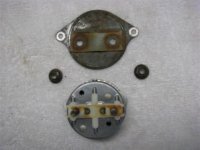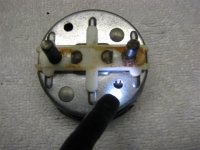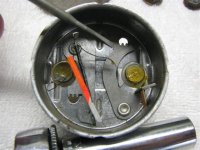Flintknapper
Sr. Member
I've seen several posts here in the past related to adjusting the factory fuel gauge in the instrument cluster.
I replaced my sending unit today....and like many others here, my fuel gauge was inaccurate.
Mine always read past full when full, and showed about a 1/4 tank when empty. I adjusted it today along with a spare gauge I have.
I only post this because I took pics. of the two adjustment points for those who don't know about them.
Also, I removed the face of one the gauges so you can see exactly what it is you are adjusting (you wouldn't do this normally).
If someone is interested in posting the pics. here, email me and I'll send them to you so they can be put up here.
I like this site well enough that I think I'll become a "contributor" soon, but I don't really care to post pics. if they are going to be removed in 3 months.
Anyway, if anyone wants to post them...so others can see, just email me.
I replaced my sending unit today....and like many others here, my fuel gauge was inaccurate.
Mine always read past full when full, and showed about a 1/4 tank when empty. I adjusted it today along with a spare gauge I have.
I only post this because I took pics. of the two adjustment points for those who don't know about them.
Also, I removed the face of one the gauges so you can see exactly what it is you are adjusting (you wouldn't do this normally).
If someone is interested in posting the pics. here, email me and I'll send them to you so they can be put up here.
I like this site well enough that I think I'll become a "contributor" soon, but I don't really care to post pics. if they are going to be removed in 3 months.
Anyway, if anyone wants to post them...so others can see, just email me.













